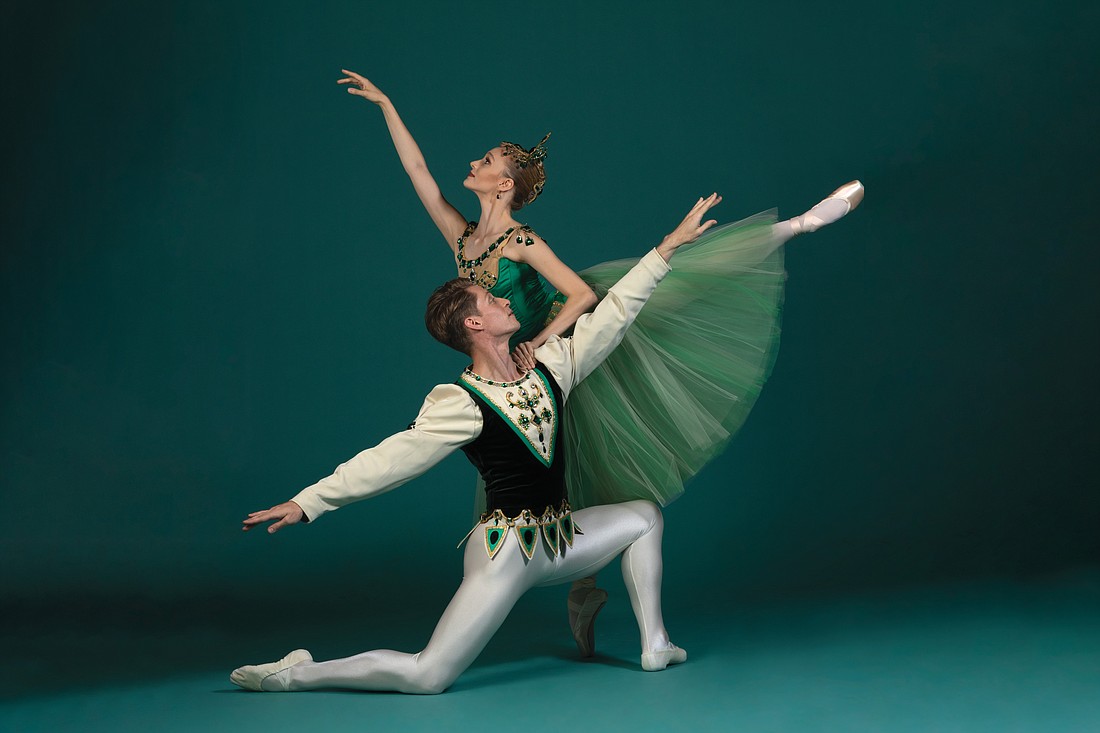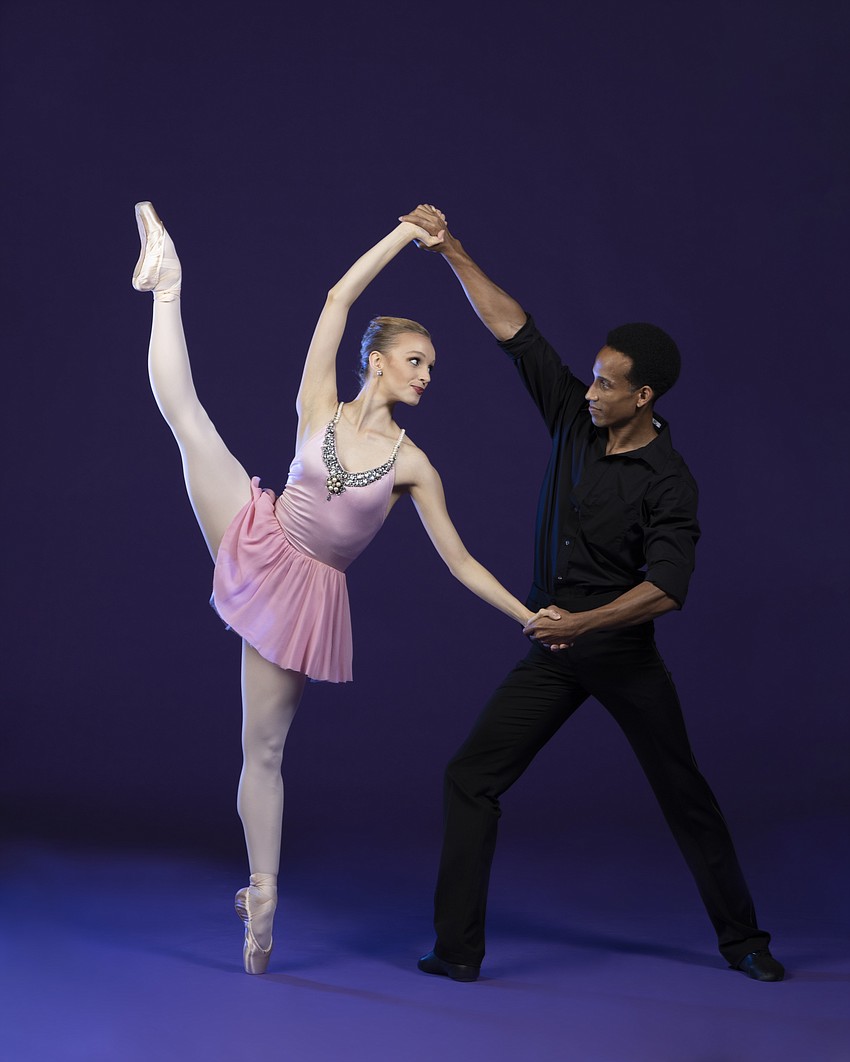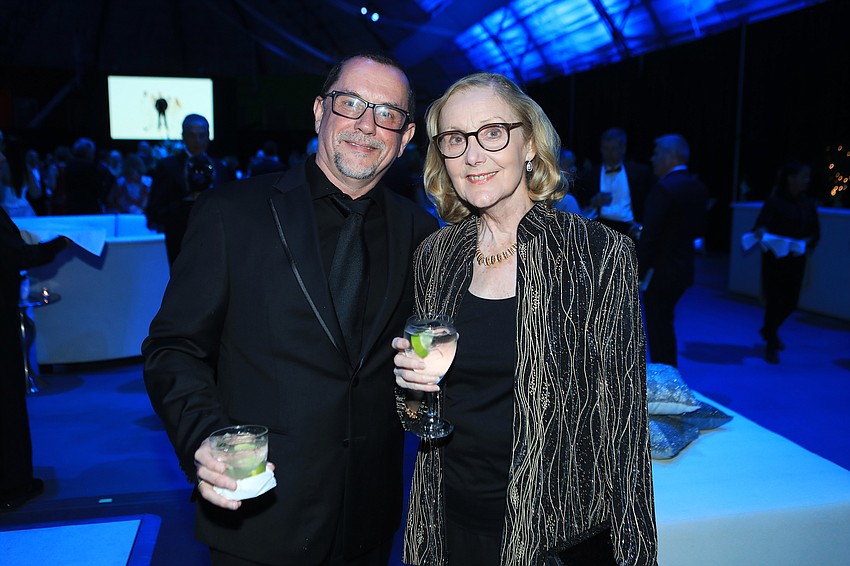- December 26, 2024
-
-
Loading

Loading

Who was George Balanchine?
The New York choreographer known as “Mr. B” would try to impress women by telling them he was a “cloud in trousers.” Most of his love interests probably didn’t realize he was quoting Vladimir Mayakovsky, a radical poet from his homeland of Russia.
But it’s not a bad description of a man charged with embodying emotion and ethereal concepts in the movements of dance.
More than 40 years after his death in 1983, Balanchine casts a looming presence over the world of ballet as companies around the world continue to perform his ballets, including the ubiquitous “The Nutcracker.”
The choreographer born Jan. 22, 1904, basically invented American ballet. He was the co-founder of the New York City Ballet and the School of American Ballet, which has trained more professional dancers than any other U.S. school.

The Balanchine Trust, founded in 1987, is dedicated to preserving the iconic choreographer’s works. Ballet companies can hire representatives of the trust to teach their dancers specific Balanchine ballets.
That’s what the Sarasota Ballet did to prepare for two Balanchine ballets in their sixth program of the season, “Portraits of Expression,” which will be held April 5-6 at the Sarasota Opera House. The two Balanchine ballets on the bill — “Who Cares?” and “Emeralds” — represent different sides of his work.
Based on the music of George Gershwin, “Who Cares?” is jazzy, upbeat and reflects Balanchine’s love of America, where he moved after a successful career with the Ballet Russe in Paris in the 1920s.
“Emeralds” is one of three acts in Balanchine’s “Jewels,” a plotless, three-act ballet based on the music of three composers. Fauré’s music is used for “Emeralds,” Stravinsky’s for “Rubies” and Tchaikovsky’s for “Diamonds.”
It may be apocryphal that Balanchine was inspired by the windows of Van Cleef and Arpels to create “Jewels,” but the jeweler’s website traces the ballet’s inception to a 1961 meeting between Balanchine and Claude Arpels that led to the realization of the first version in 1967.

To help stage “Who Cares?” and “Emeralds,” Sarasota Ballet Director Iain Webb hired Sandra Jennings, who works with the Balanchine Trust. After winning a scholarship to the American School of Ballet, Jennings was asked to join the New York City Ballet in 1973 by Balanchine and worked with him for nine years.
The official term for someone like Jennings, who prepares dancers to perform a particular work so that it remains true to its original choreography, is a “répétiteur.”
During a recent interview at Sarasota Ballet’s offices in the FSU Center for the Performing Arts, Webb said that hiring Jennings was worth the cost because the authenticity of Balanchine’s work is preserved.
Based in San Francisco, Jennings came to Sarasota about two months ago and staged the two Balanchine ballets over a two-week period. She returns to Sarasota this week and will stay through the first night of the performance.
The dancers appreciate what Jennings brings to the table. “It’s a really special thing. She’s bringing information that is basically direct from the horse’s mouth because she worked with Balanchine,” said Sarasota Ballet first soloist Daniel Pratt in an interview. “She knows the ballet inside out and backwards.”
“The part in ‘Emeralds’ that I dance was originally danced by Violette Verdy,” explained principal dancer Jennifer Hackbarth. “Sandy is able to say, ‘This is what Violette said she was thinking during this port de bras, this moment.’ She’s bringing us as close as possible to what Mr. B would have wanted.”
Back in 2016, when the Sarasota Ballet last performed “Emeralds,” Webb says the company hired Verdy herself as a répétiteur, but she was forced to cancel because of illness and ultimately died that year.
Does performing the works of such an iconic choreographer as Balanchine put pressure on a dancer?
“I wouldn’t call it pressure,” said Hackbarth. “I would say it’s more like responsibility to uphold the tradition of Balanchine. He was such an amazing choreographer and I want to uphold what he wanted.”
But a Balanchine ballet can’t “just be a museum piece. It has to be relevant today,” added Pratt. “You have to be creative and really use your imagination. You can’t just do the steps.”
Balanchine has been good for the Sarasota Ballet, Webb noted. After former New York City Ballet dancer and Balanchine muse Suzanne Farrell asked the Sarasota Ballet to partner with her eponymous company on “Diamonds,” the collaboration led to a performance at the Kennedy Center in Washington, D.C., in 2011. “That put us on the map,” Webb recalled.
While members of the Sarasota Ballet rehearse for Program Six, visions of London are dancing in their heads. At the invitation of Kevin O’Hare, director of the Royal Ballet, a contingent from the Sarasota Ballet will travel to London in June for a one-week residency in the Linbury Theatre in Covent Garden's Royal Opera House.
Webb waxes nostalgic when speaking of Covent Garden. “There’s no place like it in the world,” he said.
The Sarasota company will perform seven times from June 4-9, presenting two programs and a gala performance honoring the works of choreographer Sir Frederick Ashton.
The invitation to visit London is the result of the international relationships that Webb, and his wife, Sarasota Ballet Assistant Director Margaret Barbieri, have with dance companies around the world.

The pair danced for many years with the Royal Ballet, where the works of Ashton made a lasting impression on them and informed their tenure at the Sarasota Ballet. Webb and Barbieri, who oversees the Sarasota Ballet Dance Conservatory, took over the company in 2007.
But before Sarasota Ballet dancers are off to London, there’s still Program Six and the last program of the 2023-24 season, “Inspirations” on April 26-27. It will feature Christopher Wheeldon’s “The American,” Ashton’s “Sinfonietta” as well as “Lyric Pieces,” a company premiere with choreography by Jessica Lang.
Now that Ricardo Graziano is stepping aside from his role as the Sarasota Ballet’s chief choreographer, Lang will be creating more ballets for the company. Lang, who has choreographed more than 100 pieces for American Ballet Theatre, The Joffrey Ballet and Alvin Ailey American Dance, was appointed Artist in Residence last year by Sarasota Ballet.
While the contacts of Webb and Barbieri have boosted the Sarasota Ballet’s international profile, their 2020-21 digital season helped the company gain followers outside Sarasota, said Webb, who was seconded by Hackbarth during an interview.
Covid’s silver lining may have been the addition of new far-flung fans, but it prevented the company from returning to the Jacob’s Pillow Dance Festival, where it was scheduled to appear in August 2020.
The company made its Jacob’s Pillow debut to great acclaim in August 2015 with a program featuring the world premiere of Graziano’s “In a State of Weightlessness.” Webb and others were looking forward to returning to the festival in the Massachusetts Berkshires before the pandemic jettisoned their plans.
Regarding Jacob’s Pillow, Webb said impishly, “Could you print in boldface type that we’d really like to go back?”